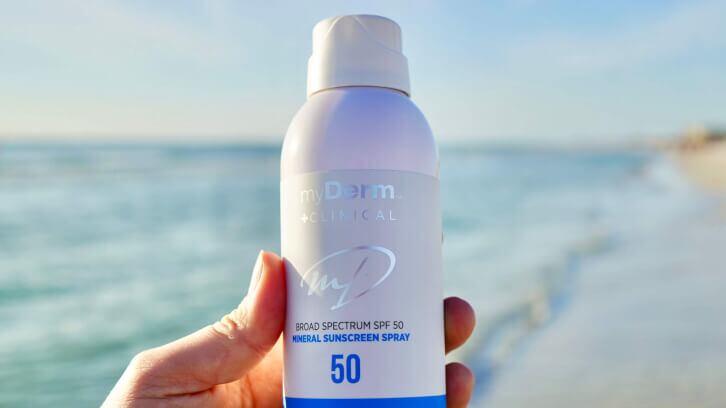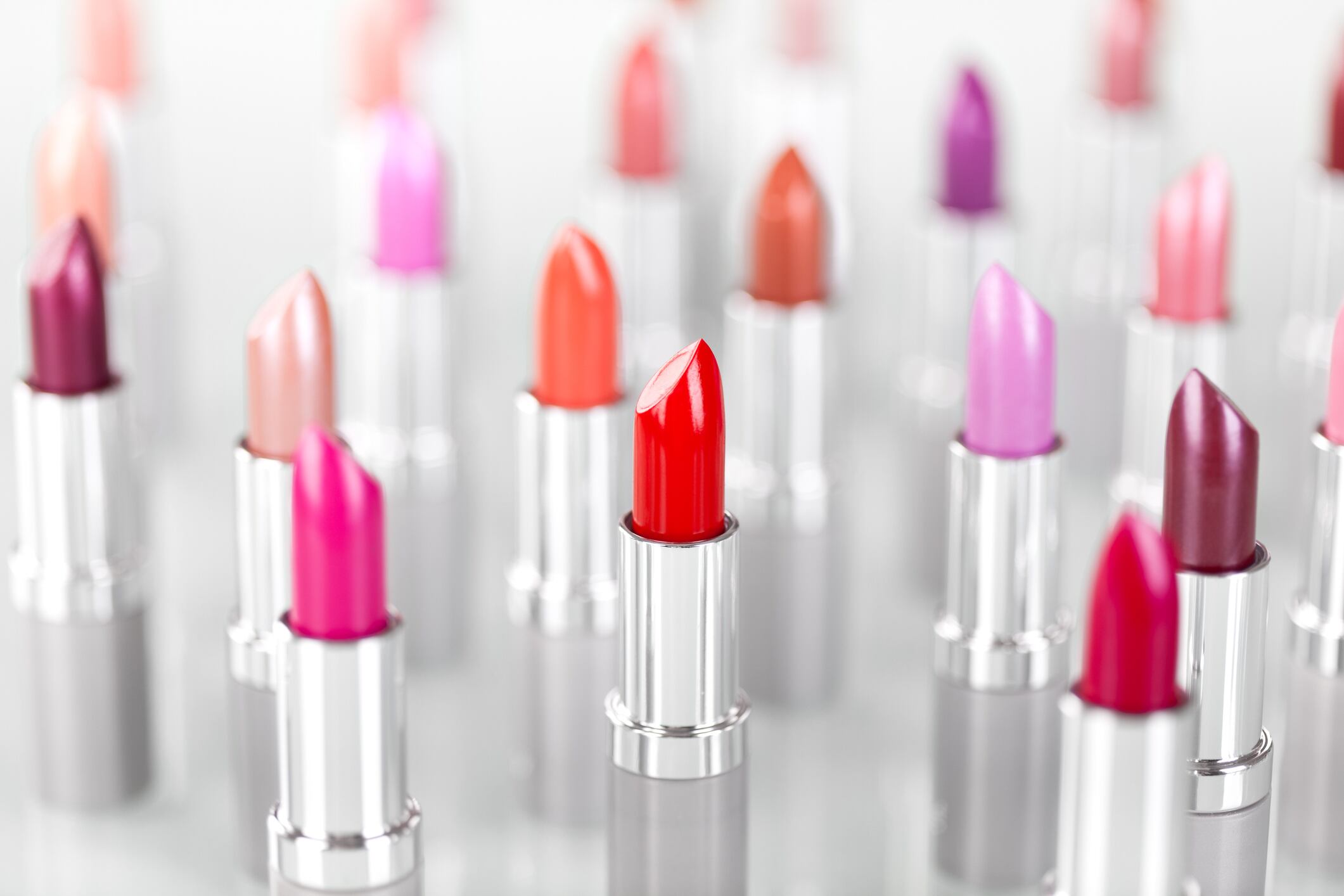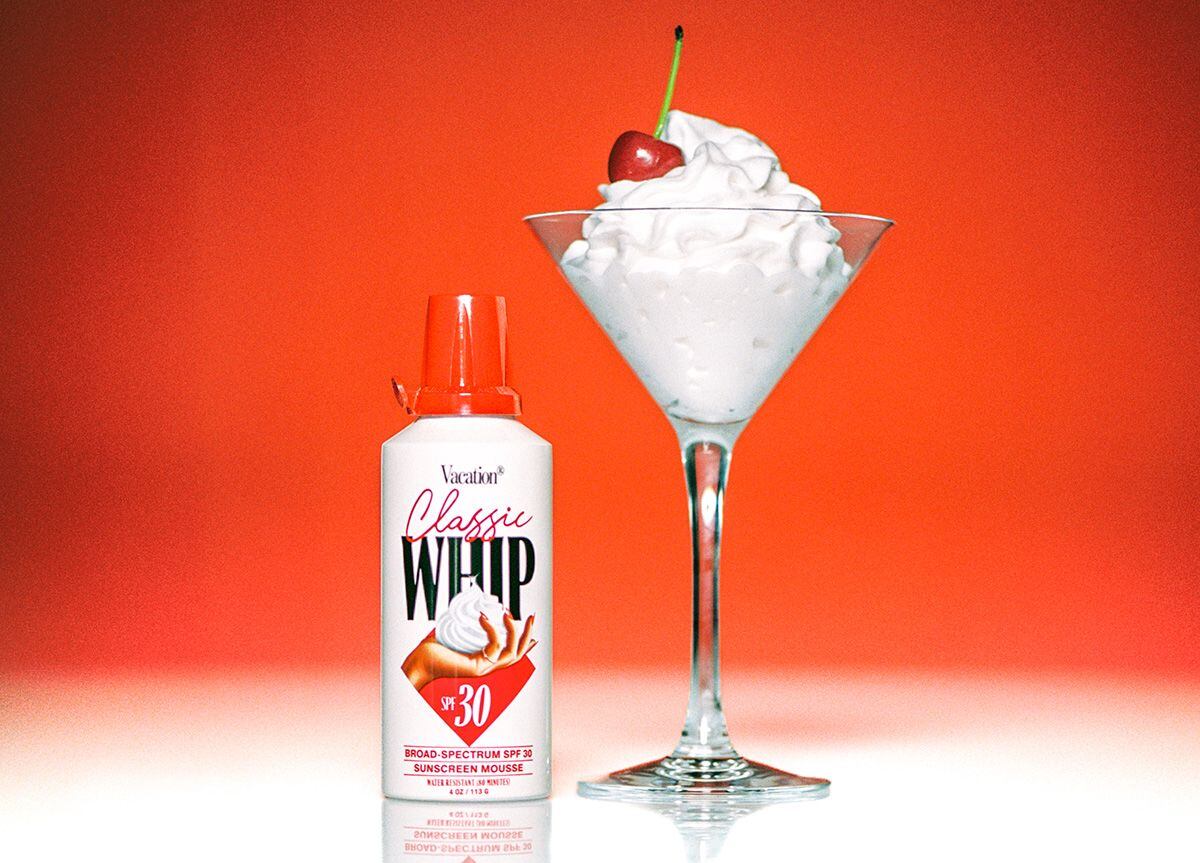Earlier this year, multinational conglomerate corporation Honeywell, who specializes in business areas including performance materials and technologies (PMT), announced it had partnered with clinical sun care brand myDerm to incorporate Honeywell’s Solstice Propellent in the formulation for the brand’s recent product launch: Mineral SPF 50 Clinical Sunscreen Continuous Spray.
To provide consumers with an eco-friendlier option for UVA/UVB protection, Solstice Propellant is a “non-ozone depleting hydrofluoroolefin (HFO) solution that has an ultra-low-global-warming-potential of less than one and helps reduce greenhouse gas (GHG) emissions by 99% compared with alternatives commonly used in aerosol products,” as detailed in the company’s press release on the announcement.
As phase-down carbon emission reduction regulations are implemented worldwide and traditional propellants like hydrofluorocarbons (HFCs) are steadily removed from personal care product formulations to improve environmental standards, formulation options like Honeywell’s Solstice Propellant provides PBC formulators and manufacturers the ability to incorporate more sustainable ingredients into their product options.
To learn more about Honeywell Solstice Propellant’s potential impact on manufacturers and suppliers to the cosmetic and personal beauty care product industries, the pain points that Solstice Propellant solves for product formulators in these industries, and the importance of the propellant’s low Global Warming Potential (GWP) score and volatile organic compound (VOC) exemption for formulators, we interviewed Joanna Minion, General Manager, Aerosols at Honeywell Advanced Materials for her insights.
CDU: What is the potential impact of this product innovation on the global industry of manufacturers and suppliers to the cosmetics and personal beauty care industries?
Joanna Minion (JM): While the technology behind an aerosol can has not changed much in seventy years, there has been a steady evolution of propellants used. Until the 1970’s, most aerosol spray cans used chlorofluorocarbons (CFCs) as propellant.
At that time, though, scientists discovered that these gases contributed to depletion of the ozone layer. In response to government regulations, manufacturers started to phase chlorofluorocarbons (CFCs) out due to the lengthy amount of time they remain in the atmosphere by replacing them with hydrocarbons such as propane and butane, or with harmful hydrofluorocarbons (HFCs) like 152a. HFCs do not deplete the ozone, but they do have high-global-warming-potentials (GWP).
HFCs are still widely used, but given their negative environmental impact, are currently being phased down by the United States Environmental Protection Agency.
Today, many innovative beauty brands are looking to Honeywell Solstice Propellant (HFO-1234ze), a non-ozone depleting hydrofluoroolefin (HFO) solution that has an ultra-low (GWP) of less than 1. The propellant helps reduce greenhouse gas (GHG) emissions by 99% compared with alternatives commonly used in aerosol products such as HFC-152a.
We don’t often think of greenhouse gases coming from our beauty products, but these items contribute to global warming too. Luckily, Solstice Propellant is ready-now to help address this problem.
For example, if just one ten ounce can of an HFC-152a-based aerosol were replaced with Solstice Propellant, it would be the same carbon dioxide removal as would come from two and a half fully grown trees.
CDU: What pain points does this innovation solve for manufacturers and suppliers to the cosmetics and personal beauty care product industries?
JM: While sustainability is a critical determinant for consumers, even the most eco-conscious consumer will want the aerosol canister containing their favorite product to deliver the same quality and experience every time it is sprayed.
Some aerosol manufacturers have tried replacing hydrocarbon propellants with compressed gases such as nitrogen and carbon dioxide; however, the pressure within these canisters does not last as long, leaving more unused product in the container, and causes slower and inconsistent spray. Compressed gas propellants also produce a much wetter spray, eliminating much of the benefit of the aerosol format.
Honeywell Solstice Propellant provides a consistent, high-quality user experience from the first application to the bottom of the can. It also dries quickly, which makes it ideal for many beauty applications, such as hairsprays, texturizing sprays, and dry shampoos.
Products powered by Solstice Propellant deliver the same quality and experience every time they are sprayed for a reliable product that is better for the environment.
CDU: Were there any challenges to incorporating Honeywell Solstice Propellant into the myDerm sunscreen spray? If so, how were those challenges overcome?
JM: Honeywell is a strong technical partner when it comes to supporting the brands we work with. For the launch of myDerm’s new broad-spectrum sunscreen, Mineral SPF 50 Clinical Sunscreen Continuous Spray, we worked with myDerm as well as their filler, InSpec Solutions, to optimize their formulation to deliver a superior sunscreen experience.
CDU: How is global warming potential determined?
JM: Global warming potential (GWP) is a multiple of the GWP of carbon dioxide (CO2), which is 1. For instance, if a chemical has a GWP of 1,000, it has 1,000 times the GWP of CO2.
CDU: How does Honeywell Solstice Propellant’s formulation achieve such a low GWP rating or score?
The GWP value is determined and published by the Intergovernmental Panel on Climate Change and is intrinsic to the chemical itself.
Honeywell has invested more than one billion dollars in research, development, and new capacity for its low-GWP Solstice HFO technology, having anticipated the need for lower-GWP solutions to combat climate change more than a decade ago. Through that research, we discovered that Solstice Propellant kept the high performance of HFC’s but had an ultra-low GWP of less than 1, reducing impact on the environment.
To date, use of Honeywell Solstice technology has helped avoid the potential release of the equivalent of more than 326 million metric tons of carbon dioxide into the atmosphere, equal to the carbon emissions from nearly 70 million gasoline-powered passenger vehicles per year. (Calculations are based on actual sales of Solstice products (in lbs) from Jan 2010 through Dec 2022, and utilize the EPA GHG equivalency calculator for conversion.)
CDU: What does it mean to be volatile organic compound (VOC) exempt, and how does Honeywell Solstice Propellant achieve this?
JM: Honeywell Solstice Propellant is volatile organic compound (VOC)-exempt — per the United States Environmental Protection Agency (EPA) and California Air Resources Board (CARB) — meaning it has negligible contribution to ground-level smog formation. This allows formulators to reduce the use of VOC ingredients like hydrocarbon propellants, particularly in continuous spray sunscreen applications.
EPA and CARB evaluate scientific environmental and toxicology studies on a given compound. After that process is complete, those compounds with the most favorable profiles receive VOC-exempt status.
CDU: How is Honeywell Solstice Propellant formulated for commercial use in products like myDerm spray sunscreen?
JM: Honeywell scientists have extensive experience working with brands to support formulation development with Solstice Propellant. We evaluate the compatibility and interaction of the Solstice Propellant with other ingredients and materials to make sure the final product has the best performance.
The technology behind an aerosol is that the propellant inside the can creates pressure and when you press down on the button, or the actuator, the pressure inside the can pushes out the active ingredients. Solstice Propellant is the best, most environmentally conscious option because of its superior performance and reduced environmental impact.
CDU: Anything to add?
JM: Consumers today demand quality and value in the items they buy, but more and more they also prefer brands that share their sustainability values. With something as important as a sunscreen, ease of use is just as important as potential impact on the environment.
Solstice Propellant continues to be a popular choice for brands with aerosols because of these qualities. For instance, Solstice Propellant does not involve ingredients that result in benzene impurities, unlike some hydrocarbon propellants. And myDerm’s Mineral SPF 50 Clinical Sunscreen Continuous Spray is Hawaii-approved with the highest formulation standards, is dermatologist-recommended, and is also free of isobutane, oxybenzone, octinoxate and parabens.
This product launch is just one example of how Honeywell Solstice Propellant is helping innovative brands like myDerm develop critical sun care products that are good for the planet, meet important regulatory requirements and do not compromise performance.





